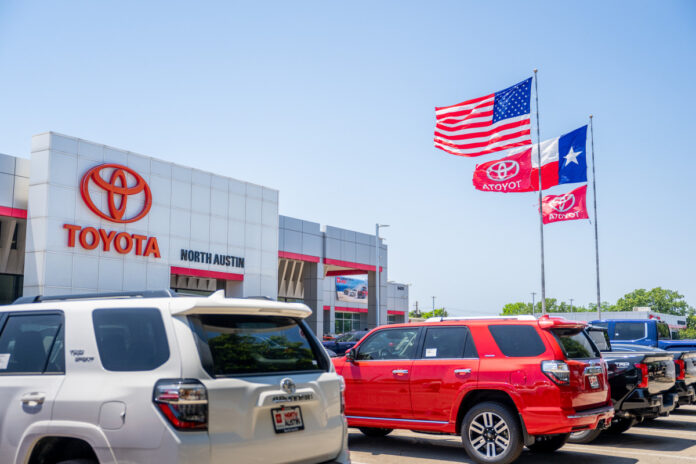Looking to the past to improve the present and future
The relationship between automakers and dealerships can be tenuous. Often, manufacturers simply ship new vehicles to dealership networks without those dealers requesting additional ones. It’s incumbent on them to sell cars, trucks, and SUVs to make room for more, and in a slowing economy, that’s not easy.
Typically, potential buyers trudge onto dealership lots hoping to go undetected. Car salespeople can be too eager, and often know little about the vehicles they’re selling. They are, all too often, a concierge for the buyer’s journey and not a trusted partner. Car dealerships are now trying to change that.
Brandon Bell/Getty Images
The ’90s-era tactic dealerships are bringing back
Like JNCO Jeans and retro Taco Bell menu items, car dealerships are also digging deep into ‘90s playbooks to increase sales and revenue. In a recent podcast, David Long, Executive General Manager at Hansel Auto Group, said, “If we’re going to grow our own business, I really truly believe there’s got to be long-term committed, established, mature relationships.” In short, Long thinks the best avenue to success is building great relationships with customers, not treating them like commission targets.
Long believes dealerships have an opportunity to stand out. So many dealerships are failing to treat customers as valuable throughout the sales process and to make them feel special, doing little more than offering to escort buyers through their journey. In the 1990s, Long recalls, things were a lot more personal. He would deliver cars to customers’ homes and express gratitude for their business after the sale. In making a customer (and their co-buyer) feel valued, Long notes his dealership’s metrics have improved. “Our repeat and referrals have gone up. Our first-appointment show ratio is much higher, too,” he adds.
Will it work?
Dealerships have toyed with all kinds of avenues to increase sales and make the car-buying journey less cumbersome. No-haggle pricing eliminated one of the major pain points – the negotiation – but also made the buying process feel sterile. It also instigated an incremental pricing slap-fight across dealership networks.
Nobody pines for the days of wide ties and polyester-suited car dealers talking you into a bad purchase, but there is room for more relationship-building. Long points out that planting the buy-back seed early helps buyers return for trade-ins rather than sell to a third-party dealership like CarMax, and that reminding customers that the dealership offers accessories often brings them back.
Auto dealerships want to sell you things, sure, but the point Long makes is that those sales will come more naturally through solid customer relationships. Suppose buyers feel they have a trusted partner throughout the buying experience. In that case, they’re more likely to revisit that dealership during the ownership journey and when it comes time to re-purchase a vehicle.
David Paul Morris/Bloomberg via Getty Images
Final thoughts
Auto brand loyalty isn’t a rigid metric. Only half of potential car buyers say they will stick with the same make when it comes time to buy again. It’s a figure that dealerships have to reckon with. Though they don’t make the vehicles they sell, they also do a poor job of making customers feel valued, which affects brand loyalty – maybe even more than the vehicle itself.
As much as we loathe overzealous salespeople, feeling ignored at a dealership and forgotten after making such a significant purchase is arguably worse. A bit of ’90s-era outreach and attention might go a long way, and might be what your next car-buying experience is like.
